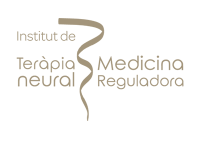Watsu Massage
12 Minutes
Are your joints, specifically your elbows, hips, and hands, aching with arthritic pain? Is your body rigid and deformed due to Parkinson’s disease-related muscle contractions? Are you getting overwhelmed and anxious as a result of juggling kids and a demanding career? If you suffer from ongoing pain or stress, you may be a perfect candidate for Watsu, a type of warm-water massage therapy.
Watsu is a combination of Shiatsu massage and immersion in warm water. It was founded by Shiatsu instructor Harold Dull in the 1980s. While conducting Shiatsu on clients, Dull refined his techniques; he currently maintains his water shiatsu technique while instructing others.
He is the originator and head of the Worldwide Aquatic Bodywork Association, which trains and approves Watsu practitioners. Watsu initially prospered in Japan and Europe before gaining popularity in the Pacific Northwest of the United States.
Watsu is a type of water therapy, often known as hydrotherapy. Watsu is the combination of Shaistu and water therapy. Shiatsu is a conventional Japanese massage technique that employs acupressure to induce calm. Shiatsu means “finger pressure” in Japanese.
WATer-shiatSU is a style of aquatic therapy where the “provider” supports and gently glides the “receiver” via warm water in smooth, fluid motions mixed with massage, mild stretches, and fingertip pressure to the torso, face, and back (shiatsu therapy). Watsu induces a deep relaxation state accompanied by profound alterations in the autonomic nervous system that have a significant impact on the neuromuscular system.
Harold Dull, who practiced Zen Shiatsu, invented Watsu in 1980. Dull found that his customers’ muscles and tissues relaxed more easily in water. In turn, he discovered that water-based shiatsu methods were more effective.
In general, Watsu treatment is utilized to alleviate discomfort and pain caused by a wide variety of conditions. The concept is that the resistance, viscosity, and friction of water alleviate physical strain and promote relaxation, hence promoting overall health.
Your Watsu sessions will be tailored specifically to your ailment. The treatment will consist of stretches, massages, and motions intended to alleviate your problems.
Even though Watsu sessions vary based on the client’s demands, the following is frequently included in a session:
- Your therapist may instruct you to wear floatation devices on your legs or arms.
- You will enter the water on your back and float. Typically, the back of your knees and head will rest on the therapist’s forearms.
- Your therapist will twist your body in huge circles slowly.
- Your therapist will switch up between extending and retracting their arms while moving you forward and backward in the water.
- Your therapist will gently and repeatedly extend your legs and arms. Additionally, they may bend, elevate, or twist certain sections of your body.
- They may place your head on their shoulder and spin you around in huge circles.
- Your practitioner will massage trigger points on your body all through the treatment.
Watsu massage combines the popular therapy of Shiatsu with the especially advantageous setting of warm water, giving a calming and pleasurable experience that can enhance the effects of massage and provide relief for individuals with certain ailments and conditions.
There are numerous techniques available for regular tabletop massage, the majority of which require the client to assume a variety of movements and positions. Some may experience significant pain and dissatisfaction owing to spinal injuries, sore backs, and other issues, however, some individuals may be able to perform these actions without difficulty.
With the assistance of warm water, though, clients become virtually weightless and can explore broader strength and flexibility without stressing their joints and sensitive muscle tissue. During a standard Watsu session, clients are softly handled, stretched, and directed through motions that promote deep relaxation and ultimately release tension, resulting in less pain, increased energy and mood, and greater mobility on land.
The therapeutic touch of humans — is an integral part of the conventional massage, this component is also present in Watsu. Practitioners help people feel more respected and comfortable, and they design tailored, one-on-one treatments to assist clients achieve their own goals.
Through the healing nature of the human touch, this caring connection helps the clients’ release tension and anxiety and achieve a deep state of relaxation. As the warm water keeps participants buoyant and entirely safe from falls and unpleasant or jarring movements, the mind and body are free to concentrate on gaining broader strength and flexibility and a more comfortable, self-assured life.
Similar to how exercising in the water may be a terrific way to augment a normal fitness routine and relieve stress on joints and muscles, receiving Watsu treatments in the water can provide nice benefits without the downsides which sometimes follow land-based therapies.
Watsu is conducted in warm, chest-deep water in private pool sessions. A provider (therapist or practitioner) moves, stretches, cradles, and massages a recipient (patient or client) throughout a session. A typical session comprises a sequence of breath coordination, diverse exercise patterns, and massage.
Movement patterns consist of gentle rocking and cradling, more energetic mobilization and stretching, silence, and particular mobilization techniques tailored to the recipient’s needs or condition. A session might range in length from a few moments to over an hour. During a treatment, the provider continuously examines the recipient’s condition, remaining alert to minute variations in muscle tension and respiration and adjusting the treatment accordingly.
Opening
Before beginning a pool practice, the therapist meets with the recipient to complete paperwork, address questions, check references and medical records, and clarify expectations, requirements, and health status. The receiver’s lower thighs and upper shins are equipped with floats to keep the legs from sinking. The receiver begins the session seated or hunched at the pool’s edge. The therapist faces the recipient, regulates breathing, and then softly guides the receiver into the “first position” (back floating posture) by gently drawing him or her backward.
First position techniques
In “first position,” the patient floats with face upward while the therapist supports the patient’s head in the curve of one arm and provides gentle traction of the spine from the skull base (occiput) to the bottom of the spine (sacrum).
The practitioner softly drifts from leg to leg (“horse to horse stance”) or aggressively lunges in alternate directions (“warrior to warrior stance”), causing the receiver to experience rocking and wave patterns. Normal Watsu movements utilize turbulent drag to generate traction and gently stretch the limbs and trunk.
Movements include gradual rocking, leg and arm stretches, rotations and stretches of the trunk, and different oscillation and pulsating patterns. For balance, movements are performed on both sides.
Basic Watsu techniques consist of the following:
Water Breath Dance – coordination of stillness and mild motion with up-and-down fluctuations in buoyancy as the recipient breaths;
Slow Offering – gently pulling alternating headward by the skull base (occiput) and footward by the bottom of the spine (sacrum), to induce spine traction and centripetal side force;
Free Spine – the spine oscillates gently;
One Leg Offering – gently tugging alternating headward by the skull base (occiput) and footward with one leg, to form a complicated drag pattern with torso, leg, and spine stretches;
Two Leg Offering – gently tugging alternating headward by the skull base (occiput) and footward by both legs, creating a complicated pattern of tumultuous drag with torso, leg, and spine stretches;
Accordion – moving both knees towards or away from the chest in time with the breath, while keeping neck traction;
Rotating Accordion – adds a spiraling spin to the accordion movement of moving both knees towards or away from the chest, while retaining occiput stability and giving the head greater freedom to rotate;
Near Leg Rotation – extending and contracting the near leg towards or away from the chest to create an alternating spine and hip rotation;
Far Leg Rotation – Opening and closing the far leg towards or away from the chest to create an alternating hip and spine rotation.
Alternative positions and methods
Other positions and procedures have been devised to achieve particular effects and target particular body areas. For instance, the “head pull” allows for moderate mobilization and traction of the neck, the “seaweed position” allows for movement and rotation of the hips and spine, and the “complete saddle” allows for stretching and massaging of the side body and limbs.
Adapting Watsu for people with disabilities
To modify Watsu for individuals with unique requirements, a series of customized procedures has been developed. Normal turbulent drag is insufficient to stretch the body of individuals with severe spasticity. To maintain gentle, extended stretches, extra manual pressure is given, such as by squeezing the opposite shoulder and pulling the knees to achieve trunk rotation. Akin to how rings or floats are used in the Bad Ragaz Ring Method for water rehabilitation, head pillows and various extra floats are often employed for certain therapeutic treatments.
Even though Watsu has been performed since 1980, its positive effects have not been thoroughly investigated.
If you are feeling anxious and detached from yourself, watsu is exactly what your body requires. It facilitates relaxation, reconnection with the body, and letting go of external concerns.
Imagine floating in lukewarm water while being gently swayed to the beat of a tranquil tune, surrounded by the glow of candles and the aroma of essential oils. Sounds paradisiacal, right? Currently documented watsu massage benefits include:
Reduced pain
Researchers have discovered a link between Watsu and pain alleviation. In a tiny 2015 study, Watsu therapy reduced pain levels in nine healthy pregnant women. This was linked to the curative impacts of immersion in water on bones, muscles and joints by the researchers.
A research from 2013 revealed comparable outcomes. Twelve individuals with fibromyalgia observed a decline in pain symptoms following fifteen Watsu sessions. A group of kids with juvenile arthritis reported less discomfort after undergoing Watsu in a 2019 study.
This could be explained by water’s action on pain nerve endings, also known as nociceptors. As per a 2019 review, the weight and fluidity of water inhibits the activation of these receptors, hence reducing the sensation of pain.
Additionally, the buoyant of water reduces the gravitational pull on the muscles, resulting in muscular relaxation. This results in reduced levels of pain.
Reduced Stress,
Generally speaking, pain raises anxiety. Nonetheless, by regulating pain, Watsu may help alleviate anxiety.
A client with TMJ problems exhibited decreased anxiety levels after Watsu, according to a 2014 case study. The researchers attributed this advantage to Watsu’s anti-pain properties.
The relationship between anxiety and pain may also work in reverse. As per the study, stress and anxiety can exacerbate the perception of pain, whereas relaxing treatments such as Watsu can assist alleviate pain perception.
The pregnant ladies who participated in Watsu in the 2015 study stated above also observed increased mood.
In addition, a 2018 case report describes a woman who underwent Watsu as rehabilitation following a severe motorcycle accident. After therapy, she felt an “emotional release” and a greater sense of physical harmony.
Even though these results are encouraging, it is essential to highlight that the sample sizes of these studies are somewhat small. Further research is required to comprehend the connection between Watsu and stress or anxiety.
Enhanced Joint Flexibility
Watsu, like other forms of water treatment, may increase joint range of motion.
In the 2019 study stated before, conventional hydrotherapy or Watsu was administered to 46 youngsters with juvenile arthritis. Before and after therapy, the researchers examined the participants’ joint range of motion.
They found no statistically significant comparison of the two treatments, indicating that Watsu may offer equivalent advantages to conventional hydrotherapy.
However, the investigators also admitted that conventional hydrotherapy’s aggressive movements may not be suitable for juvenile arthritis. However, the passivity of Watsu may bring greater relief.
Although additional research is required to determine how Watsu specifically improves joint mobility, hydrotherapy is suggested for increasing joint range of motion.
Advantages For The Spine
The continual support provided by water at body temperature is great for releasing the spine. The following are the spinal benefits of Watsu therapy:
- It relieves pressure on the vertebrae and settles the muscles. Unrestrained by muscular contractions, the circulation can remove leftover metabolites from the muscles, lowering muscle discomfort and tiredness.
- Reduced oxygen demand in circumstances of weightlessness aid to settle breathing.
- By relieving excessive pressure on the nerves, the release of strain in the spine and muscles enhances the tone and function of the entire body and the organs that these nerves serve.
- It enables the spine to move in ways that would be impossible on land.
This liberation of the spine is so vital that it is the initial focus of every Watsu session. Even someone who is not supple enough to be placed in positions for Watsu’s more sophisticated stretches can benefit greatly from its simple rolling and gradual twisting.
This flexibility of the spine serves to open its energy pathways, similar to how arm and leg stretching and rotations open their meridians. The experience of increased freedom and flexibility reprograms you to confront life on land with greater composure and adaptability.
Watsu has some disadvantages. You must be prepared to allow your therapist to handle your limbs during passive forms of therapy.
Additionally, you will have close interaction with the therapist. For some, this may feel unsettling.
Typically, a single treatment lasts approximately one hour. People should not engage in Watsu if any of the following conditions are present:
- If you have cause to believe that floating in warm water poses a health risk, consult a medical practitioner.
- If you have a perforated eardrum, you should not participate in Watsu without a medically-approved earplug.
- If you are neurologically challenged, or suffer from epilepsy or multiple sclerosis, you will need a doctor’s authorization and likely additional safety measures.
- Watsu may not be for you if you are sensitive to chemicals used in swimming pools, like bromine or chlorine.
- You should not perform Watsu if you have heart issues like cardiac failure, blood clots, or unstable angina.
- Patients with active skin illnesses or susceptibility to skin infections should not engage in Watsu sessions.
- If you suffer from kidney disease or uncontrolled diabetes, you should refrain from practicing Watsu until your health is stable.
Water therapy may aggravate or complicate several illnesses. Your therapist should take additional care if you have:
- Osteoporosis
- Balancing problems
- Spinal problems
Before trying Watsu if you are pregnant, it is a good idea to consult your doctor. Some pregnant women like the gravity-relieving feelings of floating in the water, but your healthcare professional can determine if you are a suitable candidate for this sort of therapy.
FAQs
How Should I Prep For A Watsu Massage Session?
It is advisable not to consume a large meal a couple of hours before the massage. Due to the water aspect of Watsu massage, you must bring a swimsuit and a towel. Consult your massage therapist for additional instructions.
Do I Need To Be A Great Swimmer To Get Watsu Massage?
You do not even need to be able to swim, to state the obvious. The therapy occurs in a comfortable-depth, flat pool. You will be assisted by buoyancy devices appropriate for your buoyancy limit, and the Watsu therapist will provide continuous support.
HOW SENSES CAN HELP WITH Wellness
Senses is a leading provider of luxury addiction and mental health treatment for affluent individuals and their families, offering a blend of innovative science and holistic methods with unparalleled individualised care.
A UNIQUE METHOD
successful and proven integrative holistic conceptOur program consists of treating only one client at a time individually designed to help you with all the problematic aspects of your life. All individual treatment sessions will be held at your private residence.
more infoYour program is designed based on your personal needs. The team will exchange daily information and adjust the schedule as we go. Our therapists will work with you treating integrative not just the symptoms and goes beyong your stay to ensure lasting success.
more infoOur biochemical imbalance can be affected by diet and stressful life events, but it often goes back to genetics and epigenetics. We do specific biochemical laboratory testing to determine an individual’s biochemical imbalance. Combining the results of the lab tests with anamnestic information and clinical tests, we prescribe an individualized and compounded vitamin, mineral, nutrient protocol to help recover from various disease states.
more infoOur experts combine the best from psychological treatment, holistic medicine to support you individually and providing complementary therapies all coordinated from one source working complementing each other integrative.
more infoUsing latest cutting-edge technology-based therapies such as Neurofeedback, tDCS, and SSP, we can track the biological patterns of your body, giving us valuable insight into your health and well-being as well support your brain and body performance and recovery with neuromodulation.
more infoOur chef and nutrition specialist will design your personalized diet plan supporting your body & mind recovery as well as helping with weight management. Nutrition workshops and mindful eating sessions will help you to maintain a healthy lifestyle.
more infoWellness TREATMENT LASTING APPROACH
0 Before
Send Request
0 Before
Define Treatment Goals
1 week
Assessments
1-4 week
Integrative Holistic Therapies
5-12 week
Aftercare
12+ week
Refresher Visit
Wellness Insights
latest news & research on Wellness
Stress Management
Stress management isn't a magic wand that makes stress vanish. Instead, it's a toolkit full of strategies and techniques that help you handle stress better
read more
Leadership Burnout
Leadership burnout, often termed executive burnout or executive stress syndrome, encapsulates the exhaustive toll that high-stakes leadership roles take on individuals
read moreAccreditations





























































